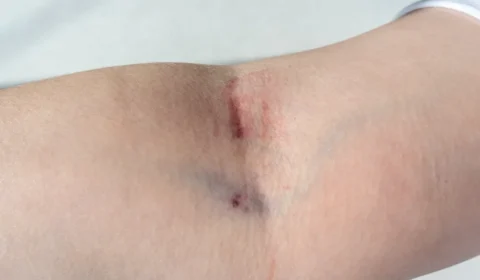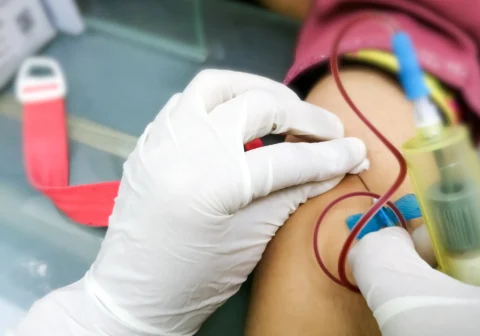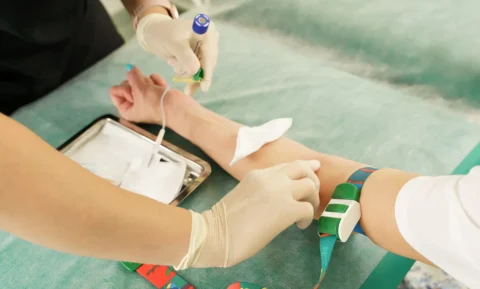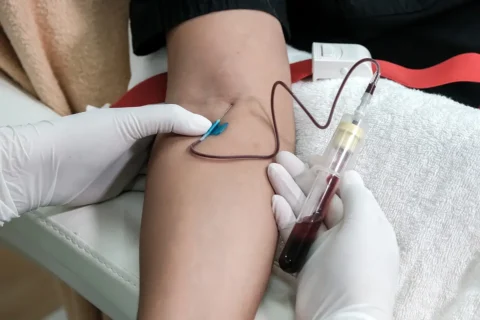Safe Practices for Immediate Post-Procedure Care
If you’ve ever had blood drawn or received an IV, there’s a good chance a butterfly needle was involved. As a healthcare worker, you’ve likely used these short, winged needles countless times for routine procedures. But have you ever stopped to think about the safest way to remove one after use? Improper removal of a butterfly needle poses risks we can’t afford to take.
Each year, an alarming number of needlestick injuries occur during or after procedures involving sharps. Besides putting providers at risk for infectious diseases, these incidents can delay treatment and drive up healthcare costs. As simple as it may seem, removing a butterfly needle incorrectly just once could have serious consequences.
This guide was created with one goal in mind – to show you how to safely detach a used butterfly needle so you can focus on caring for patients, not worrying about an accidental stick. Let’s get started learning the right technique. Your safety – and your patients’ – depends on it.
Understanding the Butterfly Needle and Its Components
A butterfly needle, also known as a winged infusion set or scalp vein set, is a medical device used to access a vein for drawing blood or administering medications1. It consists of the following key components:
| Component | Description |
| Needle | The butterfly needle has a hollow needle that is typically shorter and thinner than a standard needle used for blood draws. The gauge sizes of butterfly needles range from 18 to 27, with higher numbers representing thinner needles with smaller bores. |
| Wings | The butterfly needle has plastic “wings” on either side of the needle. These wings are used to hold and stabilize the needle during the procedure. They allow for precise placement and angle insertion, making it easier to access fragile, small, or rolling veins. |
| Tubing | The needle is attached to flexible transparent tubing, which is used to connect the needle to a syringe or other medical devices. The length of the tubing can vary, with shorter tubes typically used for blood draws and longer tubes used for intravenous therapy. |
| Connector | The connector is a type of connection that allows for the attachment of a syringe or other medical devices. It is often a female Luer connector, which can be twisted onto a syringe. |
The Significance of Winged Infusion
The significance of the winged butterfly needle design lies in several advantages it provides for venipuncture procedures.
Precise Placement
The wings allow medical practitioners to securely grip the needle between their thumb and forefinger. This precise placement is important for accessing veins that are small, mobile or delicate in nature.
Flexible Tubing
The transparent tubing connected to the butterfly needle offers improved maneuverability compared to a standard straight needle. It also allows for greater tolerance of patient movement during the procedure.
Improved Visibility
The design enables practitioners to easily view when the needle has properly entered the vein. They can immediately see blood flowing into the tubing, confirming successful venipuncture.
Ease of Use
Butterfly needles tend to have a finer gauge and shorter length, making insertion into shallow veins safer and less complicated. The shallower angle of insertion also adds to their ease of use in these cases.
Reduced Blood Breakdown
Research indicates butterfly needles cause less degradation of blood samples versus IV catheters. This is beneficial for patients requiring frequent blood tests, such as those with bleeding disorders.
Versatility
Winged infusion sets can be applied to both administer fluids or medications intravenously and collect blood samples. This dual functionality increases their utility across medical procedures.
Types of Needles
Within healthcare, an array of needle types have been developed to suit diverse clinical needs and procedures. Selecting the appropriate needle depends on several factors like the intended site of insertion, vessel or tissue size, and purpose of the procedure.
| Needle Type | Description |
| Hypodermic Needles | Most widely used medical needle. Used with a syringe to inject substances into the body. |
| Huber Needles | Specialized needles designed for accessing ports or implanted devices. |
| Spinal Needles | Long, thin needles specialized for spinal anesthesia or collecting cerebrospinal fluid. |
| Pen/Insulin Needles | Short, thin needles intended for insulin injections. |
| Dialysis and Fistula Needles | Large-bore needles used for dialysis or accessing fistulas. |
| Surgical Suture Needles | Used specifically for suturing different types of tissue. |
| Safety Needles | Equipped with a safety guard to prevent accidental pricking during use. |
| Butterfly Needles | Attached to tubing and a connector/syringe for blood collection. Easier alternative for thin or fragile veins. Common gauge sizes are 18-27, typically 21G or 23G. |
| Straight Needles | Rigid and larger-gauge than butterfly needles, suitable for patients with accessible veins. Used with a syringe for injections. |
Blood Collection and Drawing
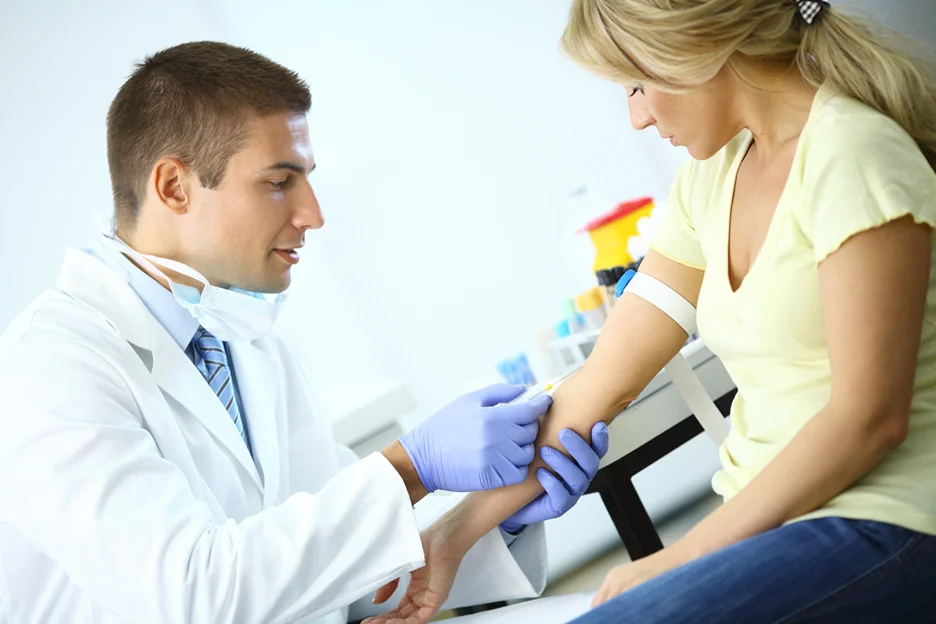
Blood collection is a crucial aspect of healthcare that involves the extraction of blood from a patient for diagnostic, therapeutic, or research purposes.
Blood vessels are the tubes that carry blood throughout the body, including arteries, veins, and capillaries. Veins are the blood vessels that carry blood back to the heart. They are the most common site for blood collection procedures.
Access veins, on the other hand, are veins that are suitable for venipuncture procedures. The most commonly used access veins are located in the arm, including the median cubital vein, cephalic vein, and basilic vein.
Arterial Blood vs. Venous Blood
Blood that flows through the arteries carries oxygen and nutrients to the body’s tissues — this is essentially called arterial blood. Venous blood carries waste products and carbon dioxide back to the heart and lungs. Arterial blood is typically collected for blood gas analysis, while venous blood is used for routine laboratory tests.
Blood Cells, Blood Clots, and Blood Specimen
Blood is composed of red blood cells, white blood cells, and platelets, suspended in a liquid called plasma.
Blood clots are formed when platelets and fibrinogen in the blood combine to form a semisolid mass. They can interfere with blood collection procedures and lead to inaccurate test results.
A blood specimen is a sample of blood collected for diagnostic or research purposes. The specimen can be collected in various tubes or containers depending on the test requirements.
Blood Test Process
Blood tests analyze blood samples to diagnose medical conditions, monitor treatment, or assess overall health. The process involves collecting a blood sample, processing the sample in the laboratory, and analyzing the results. The blood bank is responsible for collecting, processing, and storing blood and blood products for transfusion purposes.
Importance of Blood Collection Safety
Blood collection safety is essential to prevent the transmission of infectious diseases and ensure the safety of healthcare workers and patients. Proper hand hygiene, the use of personal protective equipment, and adherence to standard precautions are crucial for blood collection safety.
Detailed Procedure on Safely Inserting and Removing Butterfly Needle
Removing an intravenous needle improperly poses risks we cannot afford to take. Each step must be performed with caution and care to safeguard both patient and provider.
Preparatory Measures
Gather all required materials such as the butterfly needle, tubes, bandages, personal protective equipment (PPE), and a sharps container. Confirm patient identification and address any questions or concerns.
Preparing the Needle
Grasp the plastic “wings” of the butterfly needle between your thumb and finger, with the bevel (sharp point) facing up. Cleanse the insertion site with an antiseptic solution and allow it to dry. Apply a tourniquet above the insertion site to enhance visibility and engorge the veins.
Inserting the Needle
Hold the patient’s arm steady and anchor the vein by gently pulling the skin taut below the insertion site. Insert the needle at a 15-30 degree angle, depending on the depth of the vein and the procedure being performed. Advance the needle slowly and steadily until you see a flash of blood in the tubing or hub of the needle, indicating successful venipuncture. Release the tourniquet and remove it from the patient’s arm.
Blood Collection
Attach the appropriate collection tube or syringe to the hub of the butterfly needle. Allow the blood to flow into the collection tube or syringe, ensuring proper filling. Once the desired amount of blood is collected, remove the tube or syringe from the needle hub.
Removing the Needle
While holding the wings of the butterfly needle, gently withdraw the needle from the patient’s vein. Immediately activate any safety mechanisms on the needle to prevent accidental needlesticks. Dispose of the used needle in a sharps container.
Importance of the Sharps Holder
Using an approved sharps container is vital to prevent hazardous needlestick injuries from used needles and blades. These holders are designed with safety lids and puncture-resistant sides to fully encapsulate sharps during disposal.
Their proper use ensures anyone tasked with waste handling or disposal does not become accidentally exposed. Following regulated disposal procedures also demonstrates our commitment to universal precautions and safe working standards.
Post-Procedure
Apply gentle pressure to the insertion site with a sterile gauze pad or cotton ball to promote hemostasis. Secure the site with an adhesive bandage or tape, if necessary. Properly dispose of all used materials, including gloves and other PPE, in designated containers.
Potential Risks
If the needle is removed at an abrupt angle or pulled too forcefully, delicate veins and surrounding tissues could tear or rupture, leading to problems like hematomas forming under the skin. Bruising may indicate extravasation of blood from the puncture site as well.
Not diligently following necessary precautions opens the door to potentially infectious needlestick injuries that put one’s health at serious risk. Non-compliance with established safety protocols is never worth compromising oneself or others.
Prioritizing Safety in Venipuncture Procedures
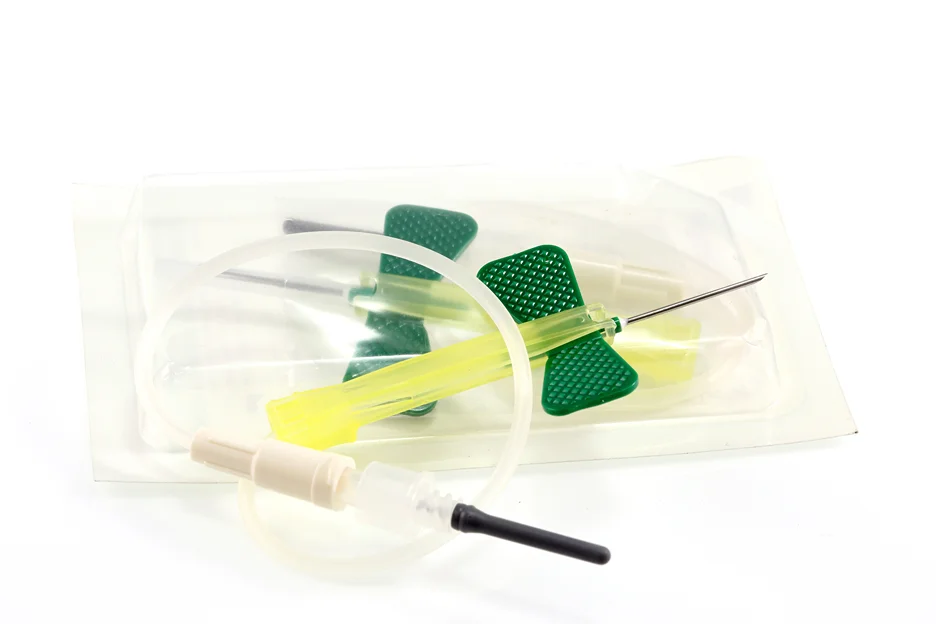
Improper technique during removal can endanger both patients and practitioners through tissue damage or hazardous exposures. Moving forward, always prioritize established safety protocols, from thorough preparation and proper disposal techniques to careful monitoring throughout the process.
Continuing your medical education is the best way to refine your skills and protect yourself and others. Consult recommended resources anytime you need guidance on proper procedures. Remember too that your well-being, and that of your patients, relies on meticulous adherence to safety standards with every task.
For all your medical supply needs, contact Face Med Store. We offer a wide selection of products for cosmetic and wellness practices, including top-quality butterfly needles and other infusion sets for safe venipuncture. Our commitment to supplying only the finest, most effective tools means you can feel confident your materials meet the highest safety and performance standards.
